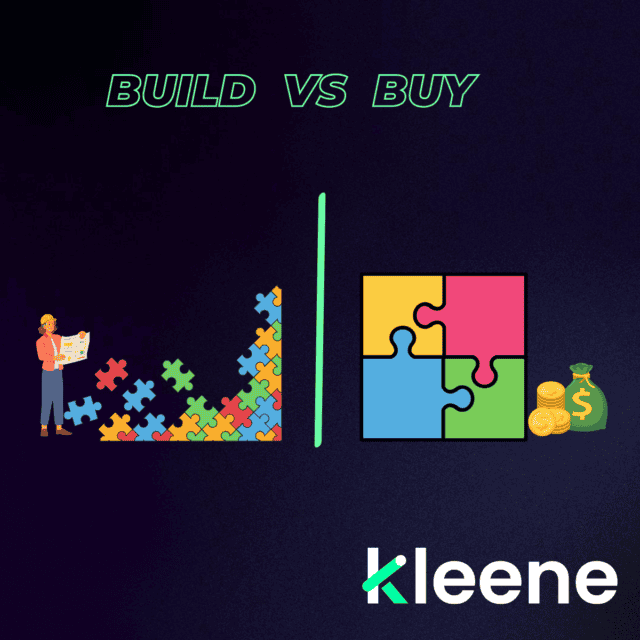Modern marketers are prioritising, achieving clear, accurate marketing attribution as essential for optimizing budgets, fine-tuning strategies, and ultimately driving growth. For businesses looking to implement advanced Media Mix Modeling (MMM) and Multi-Touch Attribution (MTA) techniques to make informed decisions across their increasingly complex media mix, a common question arises: should you build your own platform, or invest in a ready-made SaaS solution?
The decision to build versus buy isn’t straightforward. Each approach has its unique benefits and challenges, and what works best often depends on specific business needs, resources, and long-term strategy. This article will walk you through the key factors in the build vs. buy decision, providing real-world examples and industry insights to help you make the best choice for your business.
1. Understanding the Value of MMM and MTA Platforms
Marketing attribution platforms that incorporate MMM and MTA have become essential tools for eCommerce businesses. These tools allow marketers to assess how different marketing channels contribute to conversions, from first touchpoints all the way through to final sales. While MMM offers high-level insights into media spending efficiency, MTA tracks granular, individual touchpoints across channels, offering full-funnel visibility.
For eCommerce companies, especially in the mid-market space, the ability to optimize media spending and attribution is increasingly valuable. Industry research shows that investments in attribution tools are skyrocketing: global spending on attribution solutions rose from $816 million in 2018 and is projected to reach $1.6 billion by 2023 as businesses seek to improve their marketing efficiency and ROI
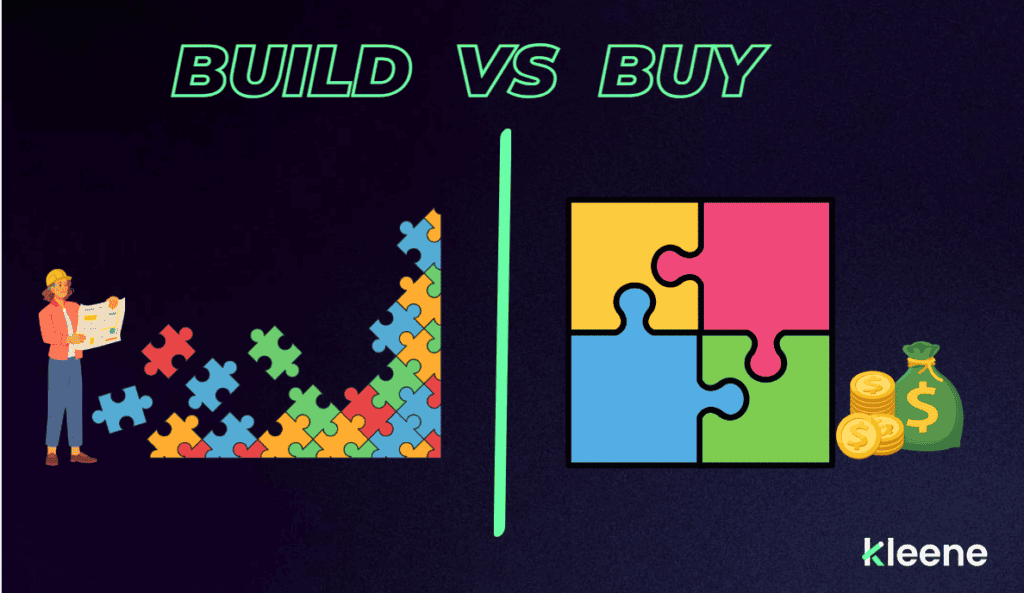
2. The Build vs. Buy Dilemma: What Each Entails
Building an In-House Platform
Building an in-house MMM and MTA platform gives you complete control over features, customization, and data handling. But this approach requires substantial resources, technical expertise, and a dedicated data science team for both the initial build and ongoing maintenance. While it allows for a high degree of customization, building such a platform can be costly and time-consuming.
Buying a SaaS Solution
Purchasing a SaaS platform, on the other hand, offers a faster, more scalable route to implementation, especially given that today’s SaaS solutions are highly customizable and capable of sophisticated model integration. SaaS vendors often provide extensive support, regular updates, and seamless integrations, which can relieve internal teams of significant overhead. However, a key trade-off is reduced control over certain functionalities and reliance on vendor support for ongoing improvements.
3. Key Factors to Consider in the Build vs. Buy Decision
1. Data Availability and Quality
Establishing robust data pipelines and maintaining high data quality is crucial for accurate attribution. Building a tool that can process, cleanse, and analyse vast amounts of data from multiple sources (CRM, ad platforms, etc.) is complex and requires specialized knowledge. SaaS solutions often come with pre-built connectors and cleaning capabilities, ensuring higher data quality from the start. These tools also enrich sessions, stitch together more customer journey touchpoints, validate results with multiple techniques to build confidence in recommendations and are able to layer in zero party data to further enrich insights.
2. Knowing What Good Looks Like
Without industry benchmarks, creating effective MMM and MTA models in-house can be challenging. SaaS providers typically offer models built on extensive testing and proven benchmarks, which allows businesses to benefit from industry best practices without developing them internally. Building this understanding in-house requires experienced data scientists, adding complexity and cost.
3. Model Diversity and Deployment
Advanced attribution needs typically require a range of models to capture the nuances of each channel’s impact on customer behavior. While SaaS solutions often include these diverse models out-of-the-box, building multiple models internally can add significant complexity, especially when scaling up or experimenting with new channels.
4. Scenario Planning and Modifiable Inputs
For marketing teams, scenario planning is invaluable, allowing them to assess the impact of budget changes or strategy shifts on outcomes. Building an internal platform that includes flexible inputs and user-friendly scenario planning requires a sophisticated interface and intuitive design—a major development effort. Many SaaS platforms are optimized for flexibility, allowing marketing teams to make these adjustments without constant technical support.
5. User-Friendly Insights
Effective attribution platforms are those that provide actionable insights without overwhelming users. This means investing in UX/UI development and data visualization tools to ensure that insights are easy for marketing teams to interpret without relying on data scientists. SaaS solutions are often designed with marketers in mind, making insights easily digestible and reducing the need for data team support.
6. Linking MMM and MTA for Full-Funnel Insights
Integrating MMM and MTA into a cohesive, full-funnel attribution model is challenging. Each model requires a distinct approach to data collection and analysis, so linking them for seamless insights involves complex data engineering. This feature is typically built into advanced SaaS solutions, whereas developing it in-house demands extensive expertise and resources.
7. Key Person Risk
In-house systems frequently rely on key individuals in data science or engineering teams. If these critical team members leave, it can jeopardize the platform’s effectiveness and continuity. Buying a SaaS solution mitigates this risk, as vendors provide dedicated support and maintenance, reducing the impact of personnel changes.
8. Maintenance and Upkeep
Building and maintaining a marketing attribution tool requires ongoing effort to keep it up-to-date, optimize performance, and address security concerns. A study on software development projects found that in-house projects are prone to cost overruns, with 53% of projects exceeding budgets by up to 89% and 31% of projects abandoned due to unforeseen complexities. SaaS platforms, in contrast, manage these updates and maintenance tasks, often saving businesses substantial time and resources.
4. Pros and Cons Summary
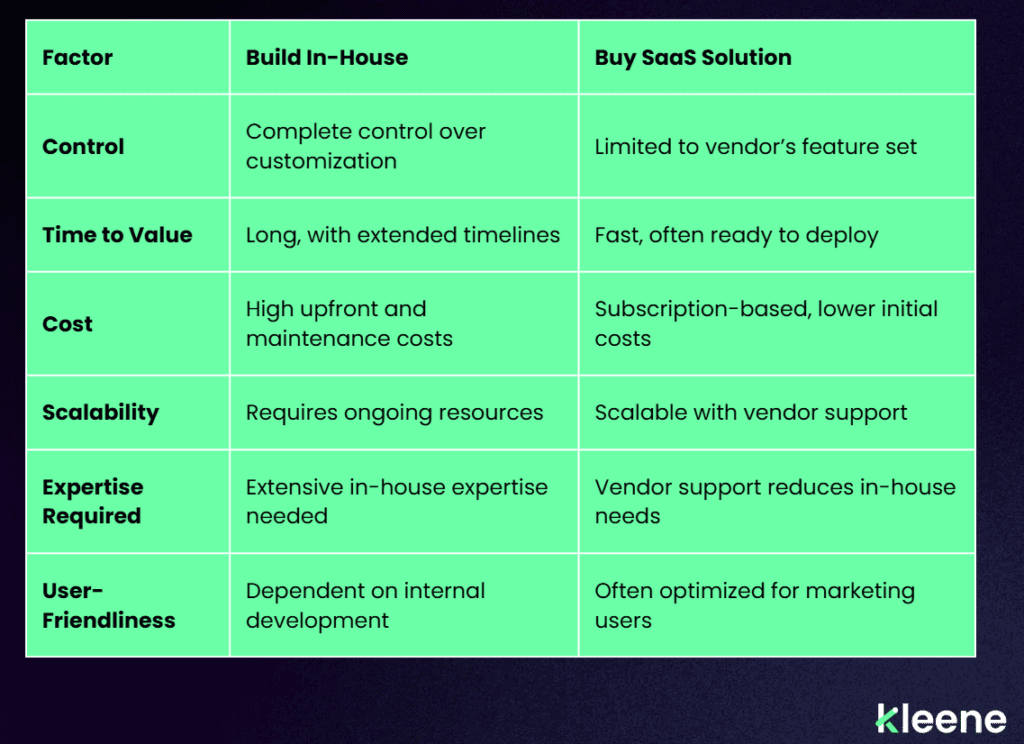
General Statistics on In-House Development Risks: Research reveals that 53% of internal software projects run over budget by nearly 90%, and 31% are abandoned due to complexity, illustrating the risks of in-house builds. These stats highlight the challenges of time, budget, and expertise that can impact internal projects. IT doesn’t mean in-house won’t work but being aware of these challenges can lead to preventing them from occurring.
6. Decision-Making Framework
To determine whether building or buying an MMM and MTA platform is right for your business, consider these questions:
Decision-Making Matrix for Build vs. Buy
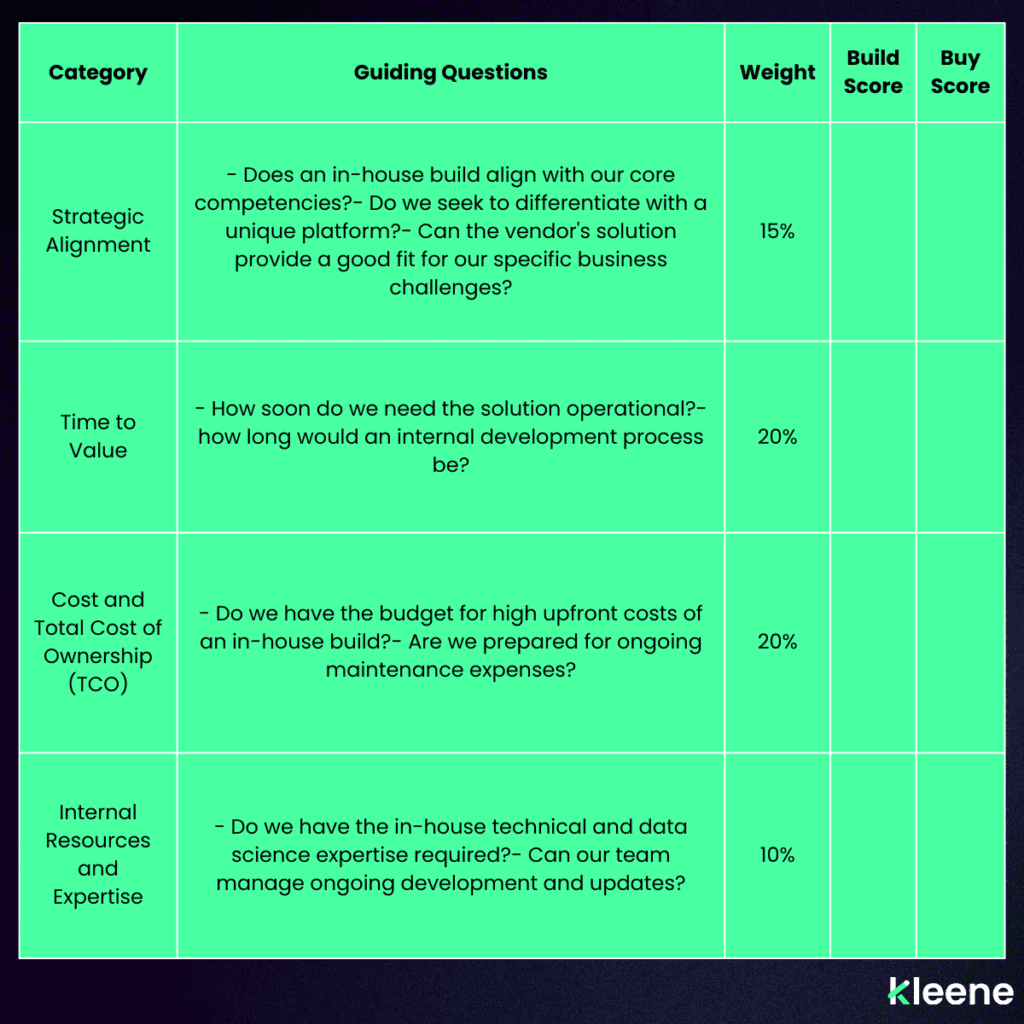
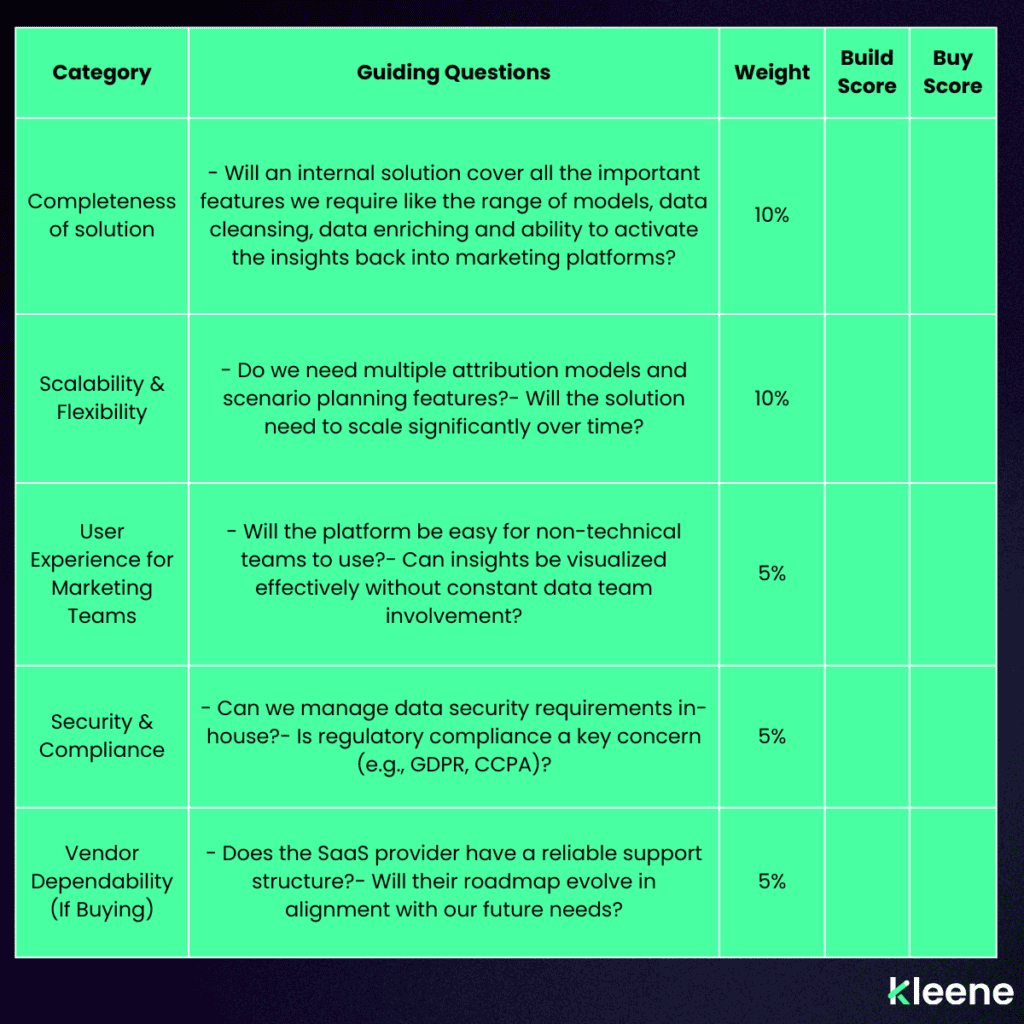
Conclusion
Deciding whether to build or buy an advanced marketing attribution platform is a significant choice that depends on your company’s resources, expertise, and strategic goals. Building an in-house solution can offer greater customization and control, but it comes with higher costs, longer timelines, and considerable maintenance. Buying a SaaS solution, meanwhile, offers faster implementation, lower upfront costs, and reduced risk, making it an ideal option for many mid-sized eCommerce businesses aiming to optimize their marketing strategies quickly.
Whatever route you choose, be sure it aligns with your long-term goals and capabilities. With a clear understanding of your business’s unique needs, you can make a decision that maximizes both immediate ROI and long-term scalability.
Want to Learn more?
Download the free e-book now : CFOs vs CMOs in Retail. 4 Practical Steps to Striking the Right Balance in Marketing Spend
You may also like:
